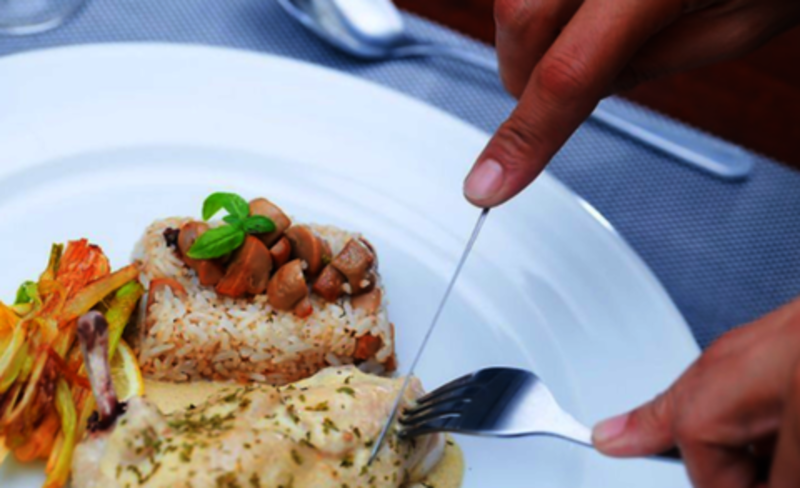Mastering the art of how to serve carved roast properly is an essential skill for any kitchen professional. Whether you're a seasoned chef or an aspiring culinary expert, presenting a perfectly carved roast can elevate the dining experience for your guests. In this guide, we'll explore the techniques and tips necessary to ensure your carved roast is served with finesse and flair.

The Importance of Proper Carving Techniques
Before diving into the specifics of serving, it's crucial to understand the importance of proper carving techniques. The way you carve a roast can significantly impact its flavor, texture, and presentation. By honing your carving skills, you'll be able to preserve the juiciness and tenderness of the meat.
Choosing the Right Tools
To serve a carved roast properly, having the right tools is essential. A sharp carving knife and a sturdy carving fork are your best allies in achieving clean and precise cuts. Ensure your tools are well-maintained and sharpened before starting the carving process. For more on knife skills, check out Knife Skills for Lasagna.
Preparing the Roast for Carving
Once the roast is cooked to perfection, it's time to prepare it for carving. Allow the roast to rest for a few minutes after removing it from the oven. Resting helps the juices redistribute, ensuring a moist and flavorful result. While resting, cover the roast loosely with aluminum foil to retain warmth.
Carving the Roast
With the roast adequately rested, it's time to begin carving. Position the roast securely on a cutting board and identify the grain of the meat. Carving against the grain results in tender slices, while carving with the grain can make the meat tougher. Begin by removing any excess fat or skin, if necessary. Then, using smooth and steady strokes, slice the roast into even pieces, aiming for uniform thickness.
Plating the Carved Roast
Presentation is key when serving a carved roast. Arrange the slices neatly on a platter, overlapping them slightly for an appealing visual effect. Garnish the platter with fresh herbs or roasted vegetables to add color and enhance the overall presentation. If you're interested in learning more about plating techniques, explore Lasagna Cutting Tips.
Serving Accompaniments
A well-served roast is often complemented by a selection of delicious accompaniments. Consider serving the roast with a flavorful sauce or gravy to enhance its taste. Classic sides like mashed potatoes, roasted vegetables, or a fresh salad can complete the meal and provide a balanced dining experience.
Table Etiquette for Serving Roast
When serving a carved roast at a formal dining event, observing proper table etiquette is essential. Place the platter of carved roast at the center of the table, allowing guests to serve themselves. Alternatively, you can serve each guest individually, ensuring everyone receives an equal portion. For more on dining manners, refer to Eating Manners and Etiquette.
Troubleshooting Common Challenges
Even experienced chefs can encounter challenges when serving a carved roast. If the roast appears dry, consider brushing it with a light glaze or sauce to restore moisture. If the slices are uneven, take extra care in your carving technique. Practicing regularly will help you improve your skills and overcome any obstacles you may face.
Enhancing the Dining Experience
To truly excel in serving a carved roast, focus on creating a memorable dining experience for your guests. Pay attention to the details, from the aroma of the roast to the arrangement of the table setting. Engage with your guests, sharing the story behind the roast and its preparation. By adding a personal touch, you'll leave a lasting impression.
Building Confidence in Roast Carving
As you continue to refine your skills in how to serve carved roast properly, your confidence in the kitchen will grow. Embrace each opportunity to showcase your culinary expertise and creativity. With practice and dedication, you'll become a master of roast carving, impressing both colleagues and diners alike.
Conclusion
Serving a carved roast properly is an art that combines technique, presentation, and hospitality. By following the tips and techniques outlined in this guide, you'll be well-equipped to serve a roast that delights the senses and elevates any dining occasion. Remember, practice makes perfect, so embrace each opportunity to hone your skills and share your culinary passion with others.

FAQ
How do I keep the roast warm while serving?
Keep the roast warm by covering it with aluminum foil and placing it in a warm oven at a low temperature until ready to serve.
What should I do if the roast is overcooked?
If the roast is overcooked, consider serving it with a flavorful sauce or gravy to add moisture and enhance its taste.
How can I ensure even slices when carving?
Use a sharp carving knife and steady strokes to achieve even slices. Practice and patience will help you improve your carving technique over time.
This article contains affiliate links. We may earn a commission at no extra cost to you.


























